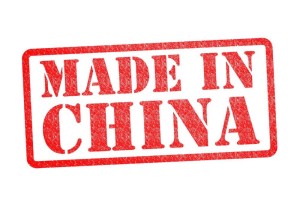 Can having your products made in China hurt your brand image?
Can having your products made in China hurt your brand image?
We often say a brand is only as good as its product and reputation. Over the past decade, producers of branded products from machines to clothing, from toys to tools, and from eyeglasses to iPhones have opted for the “Made in China” label.
Why? Because they believe they have to in order to meet the prices that the buyers are willing to pay. And why are the prices so competitive in China? Cheap labor is a factor you hear a lot about. But there is yet another factor that’s gaining more notoriety every day. It’s a factor in this increasingly transparent world, which can reflect negatively on the brand’s integrity.
China’s Growth at The Environment’s Cost
It’s China’s current policy of growth at any cost. Unlike the strict anti-pollution requirements that add cost to most European and US made products, Chinese made products can avoid those restrictions and pass the savings on to American brands looking for lower cost production.
At first, it seemed like China was far, far away and the pollution was a Chinese problem. But now a new paper published in the prestigious scientific journal, “Proceedings of the National Academy of Sciences,” links reduced air quality in the Western United States to the production of Chinese exports. The findings are a result of a two and a half year study by British, Chinese, and American scholars.
A press release from UC Irvine where one of the co-authors, Steven Davis, is an earth system scientist, reports that Chinese factories making goods for export are already responsible for at least one extra day a year of Los Angeles smog that exceeds federal ozone requirements.
Alex Wang, a UCLA law professor who studies Chinese Environmental policy, says the paper is a reminder that a significant percentage of China’s pollutants and greenhouse gases are coming from the very products we buy in the US.
It’s not just a Chinese problem anymore.
So far, the American consumer appears happy to save a few bucks on the shirt or the hammer made in China. But now they are increasingly aware of the medical and environmental costs attached to those purchases.
Jintai Lin, the lead author of the National Academy of Sciences paper, says he hopes “the research will stimulate discussion of adopting consumption-based accounting for emissions, rather than just production-based accounting.” If he is successful, consumers will have to share in the responsibility for importing more than the product they buy – like the pollution and health consequences. It’s not just a Chinese problem anymore. The hidden costs of inexpensive, imported merchandise are finally coming home to roost!
Made in China vs Made with Sustainable Practices
As these kinds of reports continue to grab the headlines and the air quality and health of the Western US continues to suffer from imported air pollution, the brand image of products made in China will also suffer. Consumers will begin to connect the dots.
Brand builders whose products say, “made in China” should be ready for competition from products made with sustainable practices – even if they cost a few dollars more! Consumers will soon realize that the money they thought they were saving with cheap Chinese products is less than the resulting environmental and health cost they will ultimately pay. Unless China quickly adopts environmentally responsible policies, American consumers will soon be looking for brands whose products are not made in China.
Brand builders who take the long view should start to look for sustainable alternatives now. Their marketing campaigns should “sell” their products’ long-term savings by exposing the true and ultimately higher price of unsustainable production. American consumers now know they are voting with their money. Will they vote for your brand?

